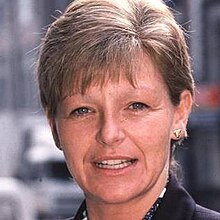inltv.co.uk - Search (bing.com)
-
Handy Easy Email and World News Links WebMail
GoogleSearch INLTV.co.uk YahooMail HotMail GMail - news.sky.com/watch-live New York Post nypost.com YouTube
This simulation reveals how a US-Russia nuclear war would play out
NYT New York Times November 2023 (inltv.co.uk)
John Gilligan Confessions Of A Crime Boss
Also see:
https://www.inltv.co.uk/index.php/insidetheeuropeandrugcartelalliance
https://www.inltv.co.uk/index.php/gerryhutch-themonk-bulletproof
Handy Easy Email and World News Links WebMail
GoogleSearch INLTV.co.uk Y
USAMAIL W
John Gilligan Convicted Irish Gangster

Confessions Of A Crime Boss John Gilligan Convicted Irish Gangster
Through his own words, John Gilligan recounts his days moving up through the criminal underground of the 1970's & 80's in Dublin. In the 1990's John Gilligan was the most successful drug trafficker in the British Isles.
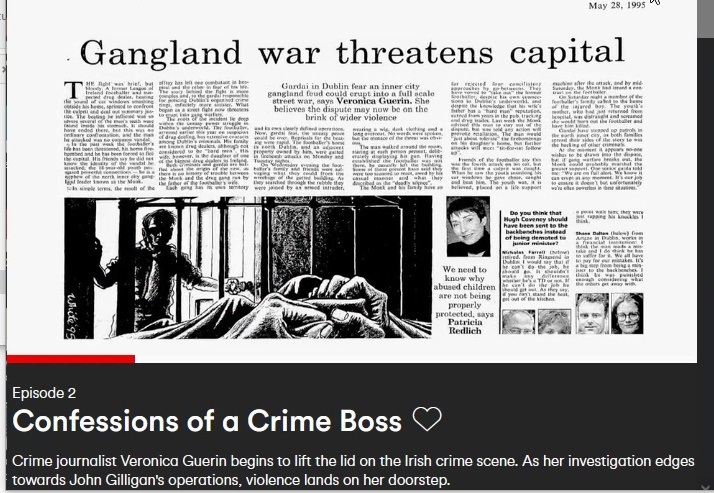
Gangland War Threatens Irish Dublin Capital
Newspaper Article by Patricia Redlich 28thMay1995
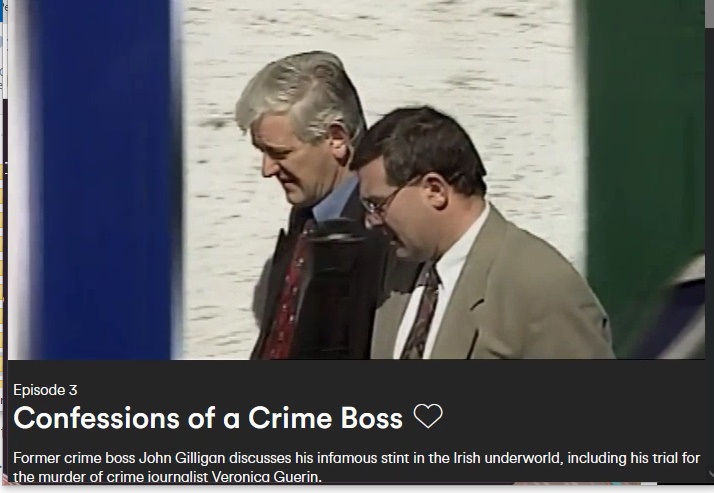
Irish Garda Investigating John Gilligan
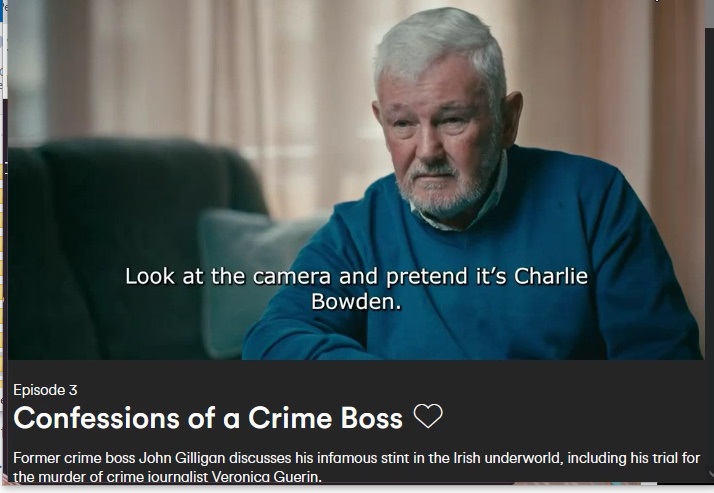
John Gilligan Crime Boss

Deep In The Drugs Underworld Of Dublin Ireland
Newspaper Article 1st May 1994
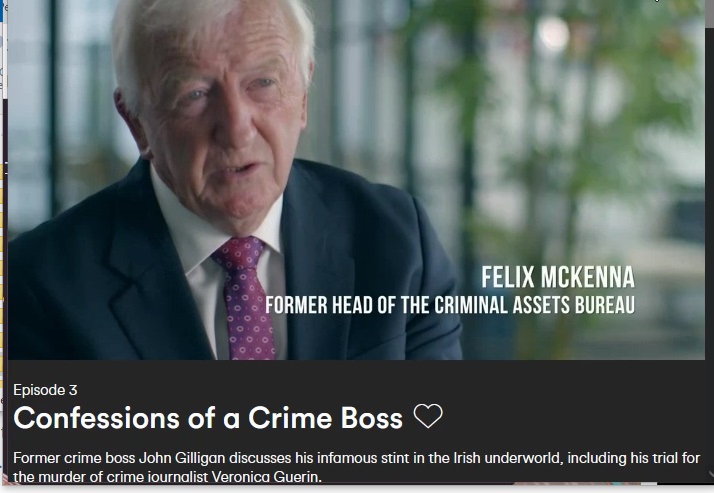
Felix McKenna_
Confessions Of John Gilligan Crime Boss Part One
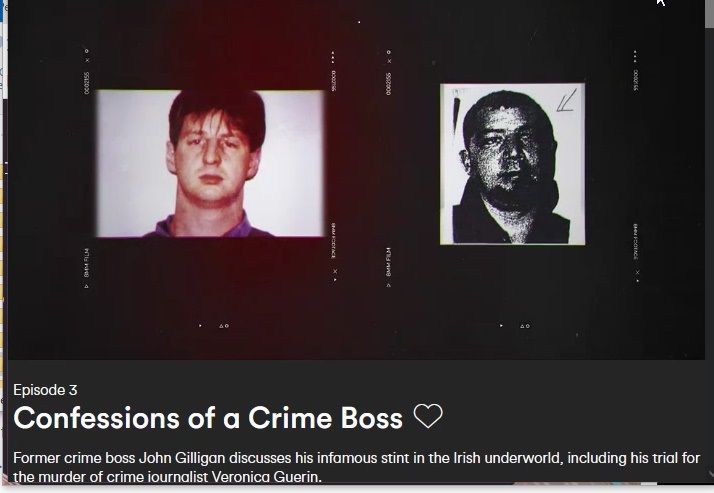
Brian Meehan - Charlie Bowden
Confessions Of John Gilligan Crime Boss Part Two
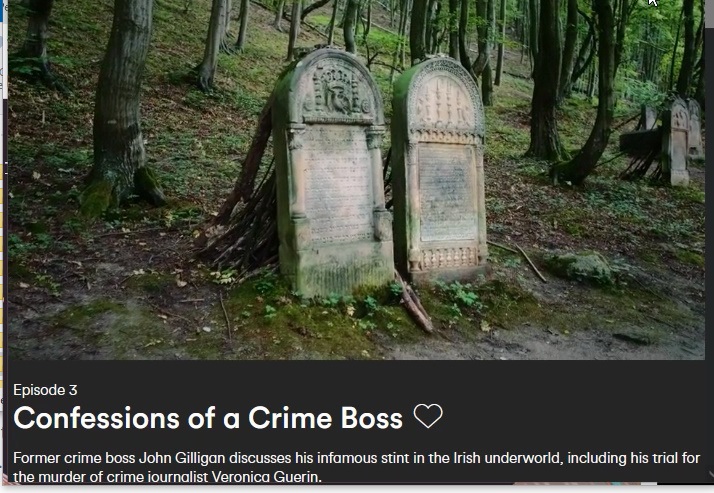
John Gilligan claims there are Guns Buried In Graves in Ireland
Confessions Of John Gilligan Crime Boss Part Three
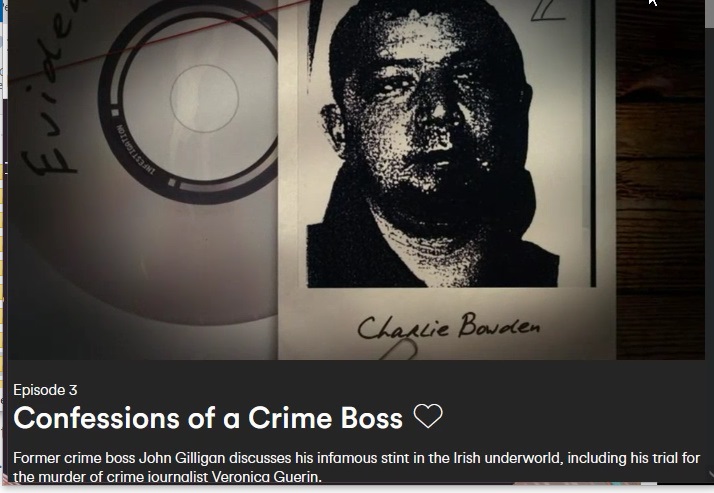
Charlie Bowden
John Gilligan States in a National TV Interview above that Hitman Charlie Bowden was the person that actually shot Veronica Guerin in 1966, from a motor bike ridden by Brian "The Tosser" Meehan
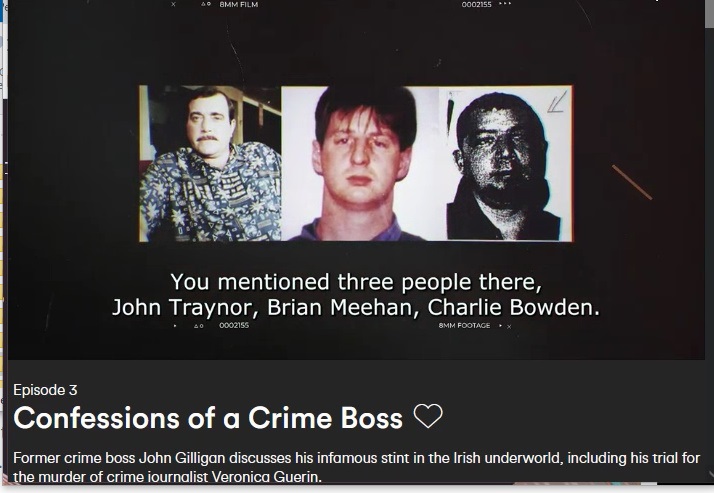
John Traynor, Brian Meehan and Charlie B

John Gilligan's Drug Empire Newspaper Article 1990's
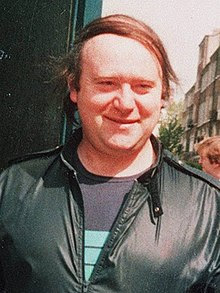
Martin 'The General' Cahill
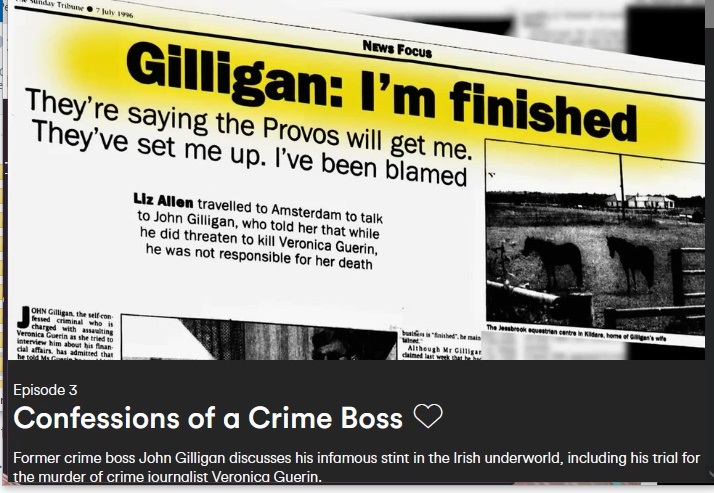
John Gillian Says "I'm Finished" Blamed For CAB Introduction
Click Here for INL News Amazon Best Seller Books
 Click Here for INL News Amazon Best Seller Books
Click Here for INL News Amazon Best Seller Books
Click Here for the best range of Amazon Computers
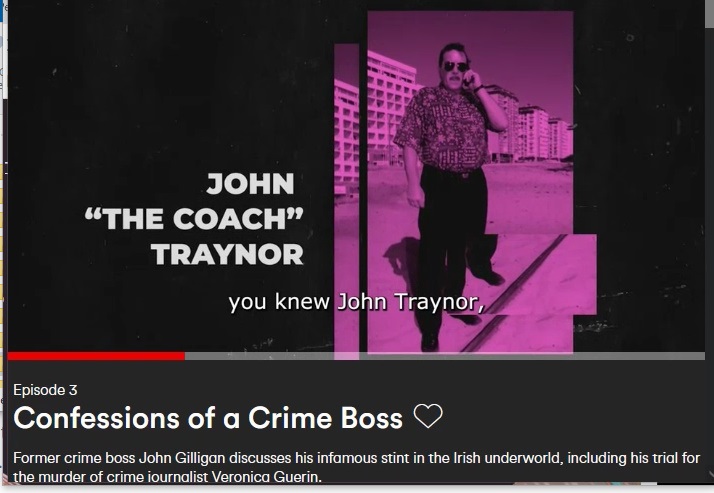
John "The Coach" Traynor
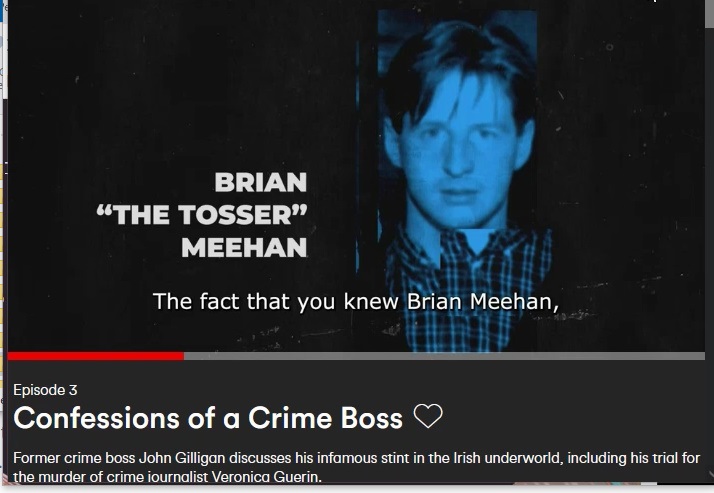
Brian "The Tosser" Meehan
In the 1990’s John Gilligan was the most successful drug trafficker in the British Isles. Growing up in poverty in Ireland, he found comfort in a life of petty crime that would intensify beyond all his expectations. Gilligan’s crimes escalated from bank robberies to cannabis importation and gave him a life of privilege and connections with criminals all over the globe.
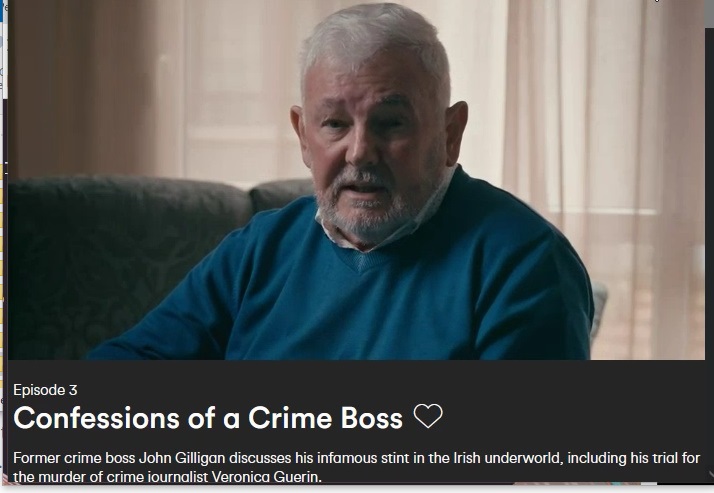
John Gillian Crime Boss
This explosive documentary mini-series, is the product of over forty hours of exclusive one-off interviews with Gilligan, in which he documents his life of crime. Over three gripping hours John Gilligan tells of his background as an armed bank robber, his deep involvement in international money laundering, and how he miraculously survived an assassination attempt. He also speaks frankly about the assassination of Journalist Veronica Guerin, a crime for which he was charged but never convicted.
Confessions of a Crime Boss reveals the rampant gangland crime of late twentieth century Ireland, and the power and influence held by the gangs who controlled the drugs trade during this turbulent time. Most of all it focuses on one man who, at the center of these criminal escapades, would become Ireland’s most notorious Crime Boss.
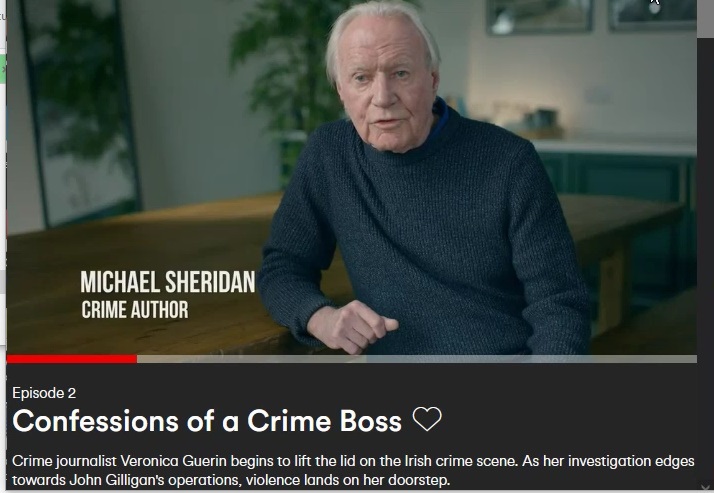
Michael Sheridin Crime Reporter
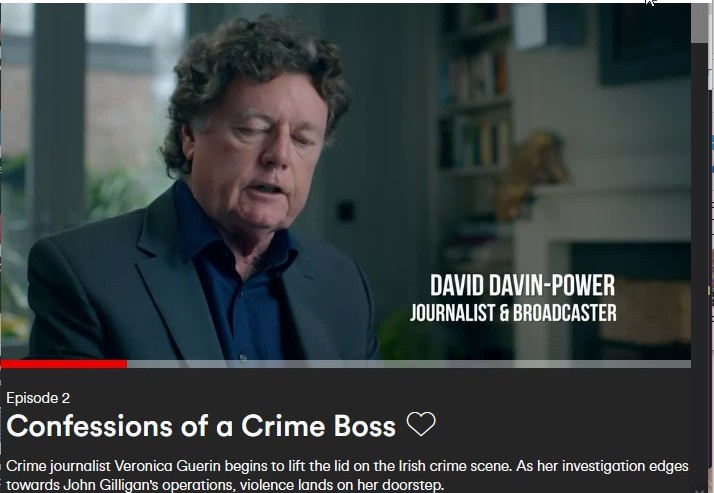
DavidDavidPower-JournalistAndBroadcasterPh1.jpg
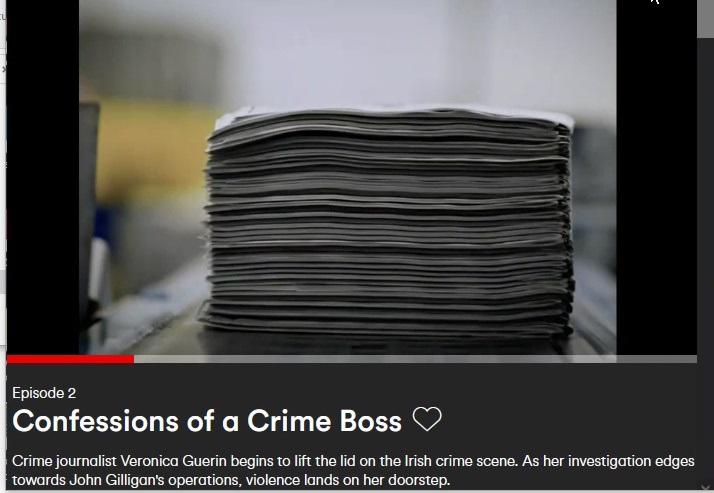
Irish Independent Newspaper
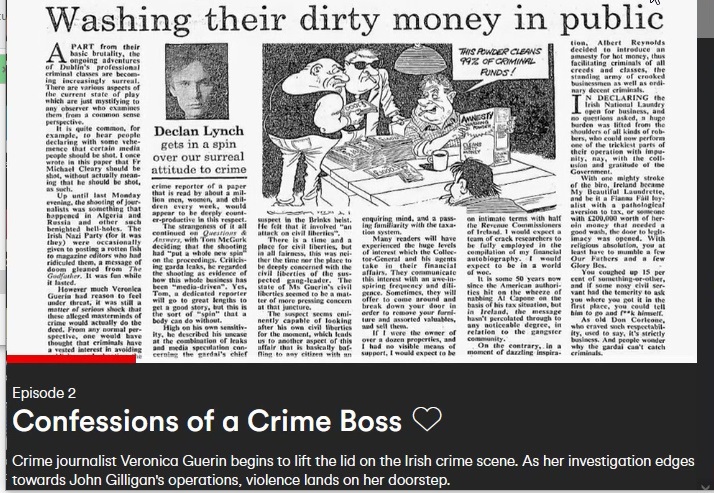
Washing Their Dirty Money In Public Artilce By Derin Lynch 1995
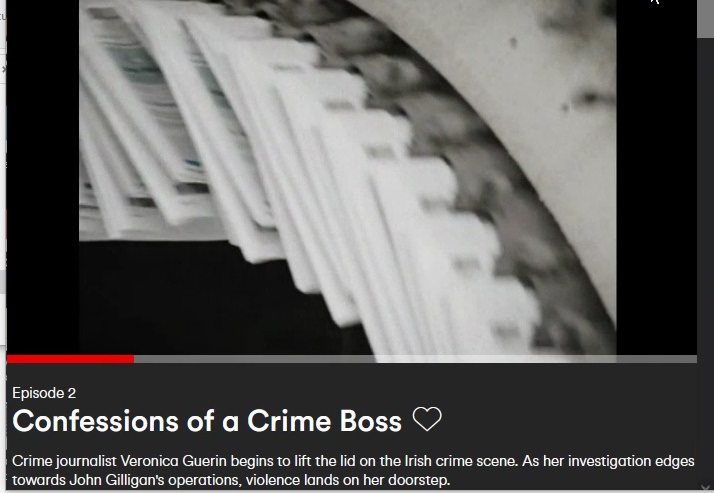
Irish Independent Newspaper
John Gilligan 'hopping mad' as old pal takes €100,000 from his Spanish bolthole - Irish Mirror Online
John Gilligan has been fleeced of more than €100,000 by one of his closest associates, it has been claimed.
Underworld sources have told the Irish Mirror a former key ally of the pint-sized criminal took the cash from him in his Spanish bolthole in recent weeks – and left the veteran gangster furious.
A source told the Irish Mirror: “He is hopping mad about it.”
Underworld sources have told us the Gilligan associate used the money to buy drugs, adding: “He has done a runner and is spending the cash on heroin.”
Sources said the disappearance of the associate is a hammer blow for Dubliner Gilligan, 70, who had been relying on the man more and more in recent years.
Our source said: “They were close. This has really got to Gilligan. He is beside himself.”
News of his ally’s disappearance comes just weeks before Gilligan – whose gang murdered crime reporter Veronica Guerin in 1996 – heads back to a court in Spain to face drugs charges.
Gilligan, who was acquitted of Ms Guerin’s murder but was jailed for 17 years on cannabis importation charges, is accused of sending drugs to Ireland by post. He stands to be locked up for three years if he is convicted when he appears in court in April in Torrevieja, near Alicante on the Costa Blanca.
The threat of a prison sentence of more than eight years still hangs over Gilligan’s head following the failure to strike a deal late last year that would have reduced the trial to a mere formality.
State prosecutors are also demanding an 18-month prison sentence for unlawful weapons possession for Gilligan after cops found a gun buried in the garden of his expat home in Torrevieja in 2020.
Detectives said when he was arrested in October 2020 the gun was a rare Colt Python .357 Magnum and described it as the “same make and model” as the one used to kill the reporter in an ambush at a red light on the outskirts of Dublin in June 1996.
However, the Irish Mirror later established that the gun was not used to murder Ms Guerin.
Despite that, he is still facing charges over the pistol – as well as for allegedly sending drugs via courier deliveries in boxes containing flip-flops and children’s towels.
Police sources said at the time of
Gilligan’s October 2020 arrest that the raid on the drug baron’s villa crucially took place as he was preparing a delivery to Ireland of marijuana and sleeping pills which heroin addicts use to help them numb pain.
A Spanish National Police spokesman did not name Gilligan in a force statement at the time but said: “Investigators managed to intercept four postal deliveries in Spain in which four kilos of marijuana and 15,000 pills had been hidden.
“The well-known Irish criminal who allegedly headed the organisation was sentenced to 28 years in prison in 2001 in Ireland and served 17 years. Irish investigators linked his organisation to the murder of an Irish journalist.”
In June 2021 after Gilligan was released from prison on bail after his arrest, the Irish Mirror tracked him down to his Spanish bolthole – where he scuttled away from us when he was confronted.
We approached him as he got out of a Black Nissan Micra driven by his son Darren – and told him we wanted to talk to him about the murder, for which he was prosecuted but acquitted.
Gilligan was entering the driveway of the villa when we caught up with him after a four-day surveillance operation in which we repeatedly photographed him enjoying his freedom on the Costa Blanca.
Click Here for INL News Amazon Best Seller Books
 Click Here for INL News Amazon Best Seller Books
Click Here for INL News Amazon Best Seller Books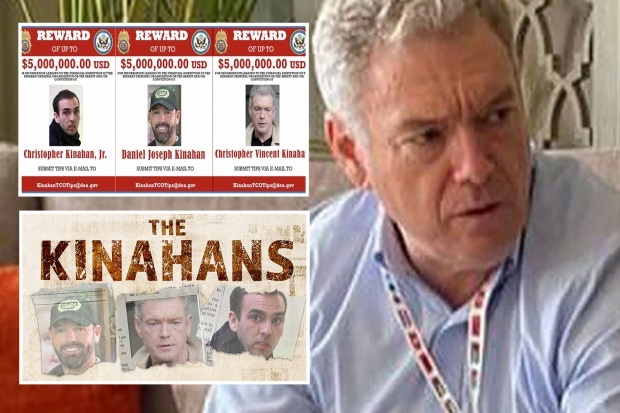
Christy Vincent Kinahan on heroin charges:
Christy Kinahan cartel kingpin turned pale after he
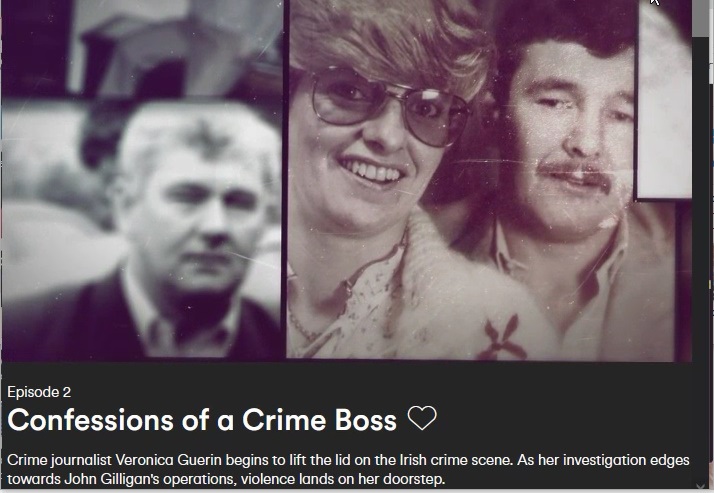
John Gilligan And Wife Early Days
John Gilligan branded a 'lying little pig' by Veronica Guerin's killer Brian Meehan
Brian 'The Tosser' Meehan, convicted of the murder of Veronica Guerin, reportedly hit the roof when he heard what Gilligan, 70, said about him on a recent TV documentary.
https://www.irishmirror.ie/
- BY EMMA MCMENAMY 24 SEP 2023
Killer Brian “The Tosser” Meehan has branded his former gang boss John Gilligan a “lying little pig”.
The lifer, convicted of the murder of Veronica Guerin, reportedly hit the roof when he heard what Gilligan, 70, said about him on a recent TV documentary.
Meehan, 56, told inmates at Shelton Abbey open prison in Co Wicklow that Gilligan is “full of s***” after he claimed Meehan admitted he was the driver of the motorbike which carried the gunman who shot Guerin.
In Confessions of a Crime Boss, Gilligan claimed Meehan talked about his involvement in the journalist’s 1996 assassination while the pair were in Portlaoise Prison.
Meehan has always denied killing Ms Guerin and insisted the blame lay with ex-soldier turned state witness Charlie Bowden.
A source said Meehan went crazy when he heard Gilligan’s claims, including how he had called Meehan a dog and the “lowest form of life going”.
The source said: “Initally Meehan ignored what Gilligan was saying... but as more came out on the documentary about him he went mad.
“He has been saying how Gilligan is full of s**t and a lying little pig. He was overheard telling others how you couldn’t believe a single word out of his mouth.”
Meehan, who has been granted day release and is due to start a work placement outside the jail shortly, is hoping to get full release from prison in the next few years.
Sources say he had hoped to move abroad, possibly to Spain or Portugal, but he may now have to review his plans.
The source said: “All [this] has thrown his name back into the spotlight. He had been hoping to move away and fade into the background.
“Now he’s p***ed off that Gilligan has put the spotlight back on him again.”
The thug, who was one of Gilligan’s henchmen, was found guilty of Ms Guerin’s murder in 1999 – the only person convicted for the killing.
Mum-of-one Veronica, who was known for her campaigning crime reporting, was blasted six times as she sat in her car at traffic lights at Newlands Cross on the Naas Road.
The brutal murder caused outrage and led to gardai smashing the entire gang run by drug lord Gilligan as well as the establishment of the Criminal Assets Bureau.
Veronica Guerin
Born 5 July 1959 Dublin, Ireland
Died 26 June 1996 (aged 36)
Naas Dual Carriageway, Newlands Cross, Dublin, Ireland
Cause of death Gunshot wounds
Education Trinity College Dublin
Occupation(s) Accountant, journalist
Years active 1990–1996
Notable credits
Sunday Independent Spouse Graham Turley (m. 1985) Children 1

Monument to Guerin in Dublin Castle gardens
|
VVeronica Guerin Turley (5 July 1959 – 26 June 1996) was an Irish investigative journalist focusing on organized crime in the Republic of Ireland, who was murdered in a contract killing believed to have been ordered by a South Dublin-based drug cartel. Born in Dublin, she was an athlete in school and later played on the Irish national teams for both Association football and basketball. After studying accountancy she ran a public-relations firm for seven years, before working for Fianna Fáil and as an election agent for Seán Haughey. She became a reporter in 1990, writing for the Sunday Business Post and Sunday Tribune. In 1994 she began writing articles about the Irish criminal underworld for the Sunday Independent. In 1996, after pressing charges for assault against major organised crime figure John Gilligan, Guerin was ambushed and fatally shot in her vehicle while waiting at a traffic light. The shooting caused national outrage in Ireland. Investigation into her death led to a number of arrests and convictions.
|
|---|
Early and personal life
The daughter of Christopher and Bernadette, Guerin was nicknamed "Ronnie." She and her four siblings were born and brought up in Artane, Dublin, and attended St.Mary's secondary school in Killester where she excelled in athletics. Besides basketball and camogie, aged 15 she played in the All-Ireland football finals with a slipped disc. She played for both the Ireland women's national basketball team and Republic of Ireland women's national football team, representing the latter in a match against England at Dalymount Park in May 1981.
Guerin studied accountancy at Trinity College Dublin. She married Graham Turley in 1985, and the couple had a son, Cathal (born 1990). She was a supporter of Manchester United football team; her prized possession was a photo of her and Eric Cantona taken on a visit to Old Trafford.
After she graduated, her father employed her at his company; but following his death three years later, she changed professions and started a public relations firm in 1983, which she ran for seven years.
In 1983–84, she served as secretary to the Fianna Fáil group at the New Ireland Forum. She served as Charles Haughey's personal assistant, and became a family friend, taking holidays with his children. In 1987 she served as election agent and party treasurer in Dublin North for Seán Haughey.
PR career: 1983–1990
After she graduated, her father employed her at his company; but following his death three years later, she changed professions and started a public relations firm in 1983, which she ran for seven years.
In 1983–84, she served as secretary to the Fianna Fáil group at the New Ireland Forum. She served as Charles Haughey's personal assistant, and became a family friend, taking holidays with his children. In 1987 she served as election agent and party treasurer in Dublin North for Seán Haughey.
Journalism career: 1990–1996
In 1990, she changed careers again, switching to journalism as a reporter with the Sunday Business Post and Sunday Tribune, working under editor Damien Kiberd. Craving first-hand information, she pursued a story directly to the source with little regard for her personal safety, to engage those she deemed central to a story. This allowed her to build close relationships with both the legitimate authorities, such as the Garda Síochána (police), and the criminals, with both sides respecting her diligence by providing highly detailed information. She also reported on Irish Republican Army activities in the Republic of Ireland.
From 1994 onwards, she began to write about criminals for the Sunday Independent.[2] Using her accountancy knowledge to trace the proceeds of illegal activity, she used street names or pseudonyms for underworld figures to avoid Irish libel laws.
When she began to cover drug dealers and gained information from convicted drugs criminal John Traynor, she received numerous death threats. The first violence against her occurred in October 1994, when two shots were fired into her home after her story on murdered crime kingpin Martin Cahill was published. Guerin dismissed the "warning". The day after writing an article on Gerry "The Monk" Hutch, on 30 January 1995, she answered her doorbell to a man pointing a revolver at her head, but the gunman missed and shot her in the leg.[citation needed] Regardless, she vowed to continue her investigations. Independent Newspapers installed a security system to protect her, and the Gardaí gave her a 24-hour escort; however, she did not approve of this, saying that it hampered her work.
On 13 September 1995, convicted criminal John Gilligan, Traynor's boss, attacked her when she confronted him about his lavish lifestyle with no source of income.[9] He later called her at home and threatened to kidnap and rape her son, and kill her if she wrote anything about him.
Guerin received the International Press Freedom Award from the Committee to Protect Journalists in December 1995.
Murder
On the evening of 25 June 1996, Gilligan drug gang members Charles Bowden, Brian Meehan, Kieran 'Muscles' Concannon, Peter Mitchell and Paul Ward met at their distribution premises on the Greenmount Industrial Estate. Bowden, the gang's distributor and ammunition quartermaster, supplied the three with a Colt Python revolver loaded with .357 Magnum semiwadcutter bullets.[11][dead link] On 26 June 1996, while driving her red Opel Calibra, Guerin stopped at a red traffic light on the Naas Dual Carriageway near Newlands Cross, on the outskirts of Dublin, unaware she was being followed. She was then shot six times, fatally, by one of two men sitting on a motorcycle.[12]
About an hour after Guerin was murdered, a meeting took place in Moore Street, Dublin, between Bowden, Meehan, and Mitchell. Bowden later denied under oath in court that the purpose of the meeting was the disposal of the weapon but rather that it was an excuse to appear in a public setting to place them away from the incident.[11]
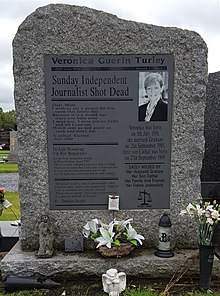
At the time of her murder, Traynor was seeking a High Court order against Guerin to prevent her from publishing a book about his involvement in organised crime.[13] Guerin was killed two days before she was due to speak at a Freedom Forum conference in London. The topic of her segment was "Dying to Tell the Story: Journalists at Risk."
Her funeral service, on 29 June 1996 at a church in Dublin Airport, was attended by Ireland's Taoiseach John Bruton, and the head of the armed forces. It was covered live by Raidió Teilifís Éireann. On 4 July, labour unions across Ireland called for a moment of silence in her memory, which was duly observed by people around the country. Guerin is buried in Dardistown Cemetery, County Dublin.
Aftermath
Guerin's murder caused outrage, and Taoiseach John Bruton called it "an attack on democracy."
The Oireachtas, the Irish parliament, realised the potential of using tax enforcement laws as a means of deterring and punishing criminals. Within a week of her murder, it enacted the Proceeds of Crime Act 1996 and the Criminal Assets Bureau Act 1996, so that assets purchased with money obtained through crime could be seized by the government. This led to the formation of the Criminal Assets Bureau (CAB).
After the murder of Guerin, Bowden was arrested as were the other members of Gilligan's gang who were still in Ireland. In an agreement with the Attorney General of Ireland, Bowden agreed to turn state's witness, and become the first person to enter the Republic's Witness Security Programme. Granted immunity from prosecution for the murder of Guerin, he was the only witness to give evidence against all four drug gang members at their trials in the Special Criminal Court: Patrick Holland, Paul "Hippo" Ward, Brian Meehan and John Gilligan. The investigation into Guerin's death resulted in over 150 other arrests and convictions, as well as seizures of drugs and arms. Drug crime in Ireland dropped 15 percent in the following 12 months. Four months after Guerin's murder, in October 1996, there was a sharp decline in the sex ratio at birth in Ireland, which fell to 0.5 from an anticipated value of more than 0.51.
In 1997, while acting as a Garda witness, Bowden named Patrick "Dutchy" Holland in court as the man he supplied the gun to, and hence suspected of shooting Guerin. Holland was never convicted of the murder, and he denied the accusation until his death in June 2009 while in prison in the UK.
In November 1998, after evidence from Bowden and others, Paul "Hippo" Ward was convicted of the murder and sentenced to life in prison as an accomplice, because he had disposed of the murder weapon and the motorbike. This conviction was later overturned on appeal.
Brian Meehan fled to Amsterdam with Traynor (who later escaped to Portugal). After the court dismissed additional evidence from Bowden, Meehan was convicted on the testimony of gang member turned state's witness Russell Warren, who had followed Guerin's movements in the hours before the murder, and then called Meehan on a mobile phone with the details.
Meehan was convicted of murdering Guerin, and sentenced to life imprisonment.[20] He is the only individual serving a life sentence for his role in the murder.
John Gilligan left Ireland the day before Guerin was murdered, on a flight to Amsterdam. He was arrested 12 months later in the United Kingdom trying to board a flight for Amsterdam after a routine search of his baggage revealed $500,000 in cash. Claiming it was the proceeds of gambling, he was charged with money laundering. After a three-year legal battle, he was extradited to Ireland on 3 February 2000. Tried and acquitted of Guerin's murder, he was later convicted of importing 20 tonnes of cannabis and sentenced to 28 years in prison, reduced to 20 years on appeal.
Pursued by CAB, in January 2008, Gilligan made a court appearance in an attempt to stop the Irish State from selling off his assets. He accused Traynor of having ordered Guerin's murder without his permission. Despite the presiding judge's attempt to silence Gilligan, he continued to blame a botched Gardaí investigation and planted evidence as the reason for his current imprisonment. Traynor had fled to Portugal after Guerin's murder, and having been on the run from British authorities since 1992, resided mainly in Spain and the Netherlands from 1996 onwards. After a failed extradition from the Netherlands in 1997, which brought Meehan back to Ireland, in 2010 Traynor was arrested after a joint UK SOCA/Regiokorpsen operation in Amsterdam.
Traynor, as of 2013, was living in Kent, England after serving time in an English prison. Traynor passed away in 2021 of cancer.
Turley remarried in 2011. Guerin and Turley's son, Cathal Turley, relocated to Dubai and, as of 2021, manages an Irish pub at the Dubai World Trade Centre.
EXCLUSIVE video: Mobster John Gilligan speaks about raking in millions from drug empire - and how he'll go to hell
In ‘The Gilligan Tapes, Ireland’s most notorious crime boss in his own words’, by investigative journalist Jason O’Toole, Gilligan also claims that he knew he would never be convicted of the June 1996 murder of Veronica Guerin.
- BY MICHAEL O'TOOLE
- 06:00, 1 SEP 2023
Evil mob boss John Gilligan today confesses he pocketed €12 million from the drug empire that had Veronica Guerin murdered and says: “I’m going to hell.”
“I’ll more than likely die soon. I’ve wasted my life I think I’m going to hell,” the veteran gangster admits in an explosive new book, extracts of which are published today in The Irish Mirror.
When asked how much he made from importing cannabis into Ireland. He replies: “I made £10 million or more. I wasn’t counting because I was getting it and spending it.”
But now he claims he is skint and says: “I haven’t got ten bob. I have no money. That’s the truth.”
He also said he made several million pounds each year from changing money for other criminals - and a similar amount smuggling cigarettes into Ireland.
“I gave Brian Meehan £1 million as a thank you in 1995 for doing work for me, just normal work,’ he boasts.
Gilligan also says he lost a massive £20 million (€25.4 million) in gambling.
“I’d say from 1970 to 1996, I would have – and this just sounds far-fetched but the truth – gambled and lost very close to £20 million.
In ‘The Gilligan Tapes, Ireland’s most notorious crime boss in his own words’, by investigative journalist Jason O’Toole, he also claims that he knew he would never be convicted of the June 1996 murder of Veronica Guerin.
“I never thought I was ever going to be convicted, because I didn’t do it,” he says.
Ms Guerin was killed in west Dublin by a two-man hit team on a motorbike in June 1996 a day before Gilligan was due to stand trial for assaulting her outside his home in Jessbrook.
The 70 year-old mobster was tried for her murder, but later acquitted. His key ally Brian “the Tosser” Meehan was found guilty and caged for life. Gardai gave evidence that the now deceased hitman Patrick Holland was the shooter.
Detectives claimed that Gilligan (70) ordered the hit because Ms Guerin was to tell a court he subjected her to a brutal beating at his Jessbrook estate in Co Meath in late 1995. In the book he tries to pin the blame for giving the order on his dead criminal sidekick, John Traynor.
The veteran mobster freely admits that members of his cannabis importation gang killed Veronica – but will go to his grave insisting he had nothing do to with it.
His self serving version - dismissed by Gardai and Veronica’s friends and family - is that the killing was ordered by Traynor. He conveniently points at state supergrass Charlie Bowden - the man who gave evidence against him - as the gunman. He says Brian Meehan admitted to him he was the bike driver.
He claims Traynor ordered the hit because Ms Guerin was planning to expose him as a heroin dealer.
“John Traynor ordered the murder of Veronica Guerin and it was carried out by Charlie Bowden. And the man on the bike was Brian Meehan, 100,000,000 per cent. Without a shadow of a doubt,” he tells the author.
- BY MICHAEL O'TOOLE
- 06:00, 1 SEP 2023
 CONFESSIONS OF A CRIME BOSS
CONFESSIONS OF A CRIME BOSSEvil mob boss John Gilligan today confesses he pocketed €12 million from the drug empire that had Veronica Guerin murdered and says: “I’m going to hell.”
“I’ll more than likely die soon. I’ve wasted my life I think I’m going to hell,” the veteran gangster admits in an explosive new book, extracts of which are published today in The Irish Mirror.
When asked how much he made from importing cannabis into Ireland. He replies: “I made £10 million or more. I wasn’t counting because I was getting it and spending it.”
But now he claims he is skint and says: “I haven’t got ten bob. I have no money. That’s the truth.”
He also said he made several million pounds each year from changing money for other criminals - and a similar amount smuggling cigarettes into Ireland.
“I gave Brian Meehan £1 million as a thank you in 1995 for doing work for me, just normal work,’ he boasts.
Gilligan also says he lost a massive £20 million (€25.4 million) in gambling.
“I’d say from 1970 to 1996, I would have – and this just sounds far-fetched but the truth – gambled and lost very close to £20 million.
In ‘The Gilligan Tapes, Ireland’s most notorious crime boss in his own words’, by investigative journalist Jason O’Toole, he also claims that he knew he would never be convicted of the June 1996 murder of Veronica Guerin.
“I never thought I was ever going to be convicted, because I didn’t do it,” he says.
READ MORE: John Gilligan 'hopping mad' as old pal takes €100,000 from his Spanish bolthole
Ms Guerin was killed in west Dublin by a two-man hit team on a motorbike in June 1996 a day before Gilligan was due to stand trial for assaulting her outside his home in Jessbrook.
The 70 year-old mobster was tried for her murder, but later acquitted. His key ally Brian “the Tosser” Meehan was found guilty and caged for life. Gardai gave evidence that the now deceased hitman Patrick Holland was the shooter.
Detectives claimed that Gilligan (70) ordered the hit because Ms Guerin was to tell a court he subjected her to a brutal beating at his Jessbrook estate in Co Meath in late 1995. In the book he tries to pin the blame for giving the order on his dead criminal sidekick, John Traynor.
The veteran mobster freely admits that members of his cannabis importation gang killed Veronica – but will go to his grave insisting he had nothing do to with it.
His self serving version - dismissed by Gardai and Veronica’s friends and family - is that the killing was ordered by Traynor. He conveniently points at state supergrass Charlie Bowden - the man who gave evidence against him - as the gunman. He says Brian Meehan admitted to him he was the bike driver.
He claims Traynor ordered the hit because Ms Guerin was planning to expose him as a heroin dealer.
“John Traynor ordered the murder of Veronica Guerin and it was carried out by Charlie Bowden. And the man on the bike was Brian Meehan, 100,000,000 per cent. Without a shadow of a doubt,” he tells the author.
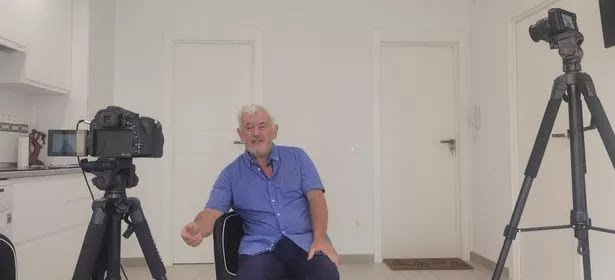 John Gilligan
John Gilligan
Gilligan, who is now living in Spain and facing fresh drugs charges that could see him locked up for more than eight years, also claims Bowden was offered £100,000 (€127,000) to carry out the murder.
“Charlie Bowden was to get £100,000. He got £50,000 up front and £50,000 after the job. I don’t know if he got the rest of the money after the job.
Gilligan admits in the book he earned more than €12 million smuggling cannabis into Ireland in the mid-1990s –
He says his own life is nearly over and calls on former soldier Bowden, who is now living abroad under the Witness Security Programme, to admit his role in the murder.
The fallen drug boss also spins his own version of the day Ms Guerin called to his door, claiming he didn’t assault her despite evidence to the contrary.
And he refuses to admit - despite supporting witnesses and trusted court testimony - that he rang Ms Guerin and threatened to rape her young son unless she dropped the assault complaint.
Our extract below opens with his self-serving account of what he says happened that day.
Q. Veronica Guerin doorstepped you in Jessbrook on the morning of 14 September 1995 [after he had a family party there the night before]. What happened next?
A. I actually said to Geraldine, ‘There’s a woman in a red car. Will you go out and see her.’
And she said, ‘Oh, that’s the woman from an equestrian centre. She’s supposed to be here today. Will you tell her we have a hangover?’
I went to the patio door to open it. The patio door was where you parked your car and you could get straight into the house. So, I looked and she wasn’t there. I went back into the sitting room. I looked at the cameras. She was at the back utility door.
I opened the door.
‘Hello?’ I said.
‘John Gilligan?’ she said.
I said, ‘Yeah’.
‘I’m Veronica Guerin.’
I knew who she was as soon as she said the name. I said, ‘Get outta here,’ and closed the door. She was after putting her foot to the door. She came in after me into the utility room.
‘John, I want to talk to you.'
I didn’t let her speak anymore. I just turned around and I said, ‘Get the f**k out of this house,’ and I grabbed a hold of her and I pushed her outside and slammed the back door. And the car went up the driveway a hundred miles an hour.
Q. Veronica later went to the Garda and made an official complaint about you allegedly assaulting her. She stated that you, ripped open her blouse because you were convinced she was wearing a wire.
A. The police interviewed me and they let me go in three or four hours. I didn’t even have to apply for bail. It would have been a golden opportunity to have me in custody for about two years.
They wouldn’t have missed this opportunity to come down and arrest me and bring me to court and charge me. Instead, five months later, a different police inspector rang me and asked me to come home to be interviewed.
And they want people to believe that. You beat up a woman, you leave her black and blue and they don’t even come to arrest you? They didn’t even call to the house.
No person on the planet, especially in Ireland, can go into a police station battered and bruised, and say, ‘Somebody’s done this to me.’ And the police go, ‘Ah, well, we’ll think about it, we might interview them in six months’ time.’
Q. You then allegedly phoned Veronica Guerin when she was in the presence of a barrister on 15 September 1995 and told her, ‘If you do one thing on me, or if you write about me, I will kidnap your son and r**e him. I will shoot you. Do you understand what I’m saying? I will kidnap your fu**ing son and r**e him. I will fu**ing shoot you. I will kill you.’ Is that true?
A. It’s filth. Filth. I did not say it. A man should be put to death for saying such a thing like that. And I believe that.
And if a man kicked my head and left me in hospital, because he believed that I said that, sure, I wouldn’t fall out with the man, because it’s a horrible, horrible thing to say. Only a dirt of a person would say that.
Q. You have repeatedly denied ordering the murder of Veronica Guerin. So who do you believe actually killed Veronica Guerin?
A. John Traynor ordered the murder of Veronica Guerin and it was carried out by Charlie Bowden. And the man on the bike was Brian Meehan, 100,000,000 per cent. Without a shadow of a doubt.
Brian Meehan never shut up in the prison. He told everybody in the prison.
I was in prison when Brian Meehan told me. He told me he was on the bike. And he told me the reason why they done it: Traynor wanted it to be done because she was going to print a story that he was dealing in heroin.
They’re dogs, they’re dogs. They’re low lifes. They’re the lowest form of life going. There was no need to do any of that. Even on the day they killed Veronica, they were drinking in The Hole in the Wall [pub in north Dublin], bragging as they watched England play against Germany in the football. He told a few people what he and Charlie had done but none of them would give evidence.
Q. According to Brian Meehan, Bowden certainly knew how to handle a gun. He had learnt how to become an excellent marksman during his time in the Irish Army. He won all the competitions for marksman [there].
A. Brian Meehan told me that Bowden was going to take her out for Traynor for £50,000 – a rifle shot.
Charlie Bowden was to get £100,000. He got £50,000 up front and £50,000 after the job. I don’t know if he got the rest of the money after the job. Brian Meehan would tell different versions. I don’t know, to tell you the truth, if Meehan got anything.
Q. What do you think happened to the (murder) gun?
A. Well, whatever Charlie Bowden and Brian Meehan done with it, they done with it. I don’t know. I asked Meener many times, ‘Where’s the gun?’
He said, ‘It’s gone. It’ll never be found.’ They wouldn’t answer you. I always thought they had it hid somewhere and they were afraid I’d say it to somebody and somebody else would say to somebody else and somebody else would tell the police. Well, how long ago is that now, 1996? And it hasn’t been found. So it makes me think it must have gone into the sea. If it has been buried in the ground, I think with buildings going up and down, there’s a good chance it would’ve been found. So I think that went into the water somewhere, deep water. That’s an educated guess.
Q. What would you say to Charlie Bowden if he was reading this?
Charlie, come clean. Tell what you done. If you have any remorse, or even if you haven’t got remorse, say it. Say it, for the sake of all the hurt that my family [are] after getting out of this. You’ve got that immunity for anything you say. You won’t be charged. Admit it, Charlie, say it. I’m only telling the truth because all the cases are over and I’ll more than likely die soon, and for my family and friends, as I said. There’s no money in this for me. I’m not getting any money. So the truth is the truth.
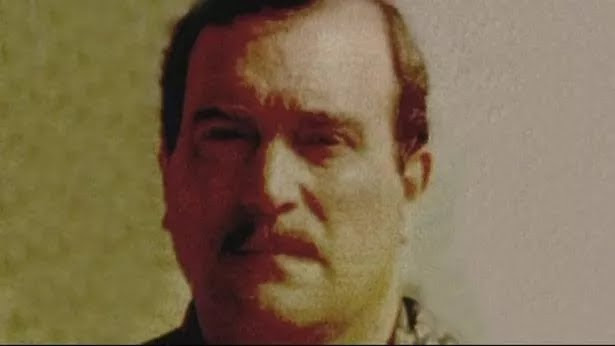 John 'The Coach' Traynor (Photo: RTE)
John 'The Coach' Traynor (Photo: RTE)
Q. Why was John Traynor never even questioned by the Irish police?
A. John Traynor has told loads of people he done it, but John Traynor couldn’t be arrested. Traynor was arrested in Holland with Brian Meehan, but they couldn’t bring him back because he had a file, with judges and priests, all having bondage sex and somebody died, they were strangled.
He was a suspect. One hundred per cent he was a suspect, but because he had the file robbed from the Department of Justice, they were terrified to come near him. But they still should have … the file would have been the truth. Why were they afraid of the truth coming out? So what if a few judges and clergy were involved in it? And politicians. If they done something wrong, they done something wrong. They’re no better than me.
Traynor had them over a barrel because he had the files out of the DPP’s office up in Stephen’s Green – that’s why they didn’t come after Traynor. As I said before, he was arrested with Brian Meehan in Holland and they held Brian and let Traynor go. So, Traynor had that file. Martin Cahill got that file and he said, ‘If you try ever to take us in and stitch us up we’ll produce this.’
Why was he not brought back when the police had him? They could have extradited him on the backs of the warrants. They just let Traynor do what he wanted. So they had to have a fall guy – so that was me.
I believe he was setting me up all the time. He was saying I was doing this and doing that, and winding Veronica Guerin up.
Q. What ran through your mind when you were found not guilty of the murder of Veronica Guerin?
A. I never thought I was ever going to be convicted, because I didn’t do it. The way the case went, the police drip-fed the media evidence and they exaggerated the thing. It was all about phone records. There were only mobile phones attached to the landline, there was no texts in them days; it was a bill phone. Every phone call could be traced.
Q. Theoretically, you could now confess to having organised the murder if you wanted to.
A. Yes, there’s no double jeopardy. I didn’t, but if I did do it, I could say: ‘Yes, I ordered the murder of Veronica Guerin.’ I could even go further; I could say: ‘I was actually on the motorbike. And there’s nothing the State could do. But I wasn’t there. I didn’t know anything about it. Nothing.
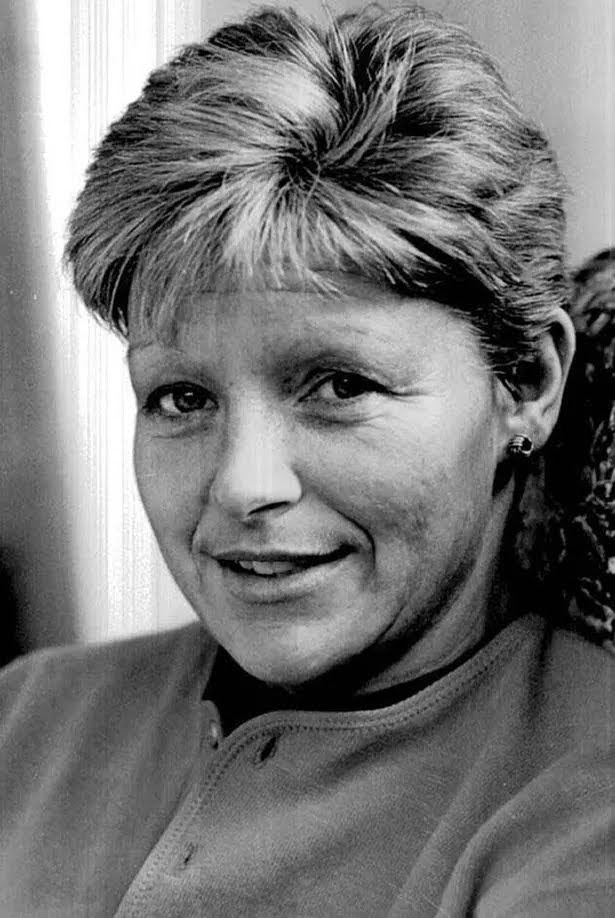 Veronica Guerin
Veronica Guerin
Q. What would you say to the readers who believe you were involved in the murder of Veronica Guerin?
A. Well, this is the way I can explain myself: a lot of readers will believe and do believe and kind of have to believe I was involved. Because the majority of the general public, the good people, the working-class people, they actually believe. They’re naive in a sense, but I don’t say that in a bad way: they just think that if it’s in the newspaper it should be true.
And, if youse know I done something – charge me. If youse want me to come back to Ireland I’ll come back to Ireland as soon as I’m able. I wouldn’t run.
It must be difficult being in your seventies, based in a foreign country and not speaking the local tongue?
My life is, for the want of a better word, over. And I’m not going to cry. I lost about thirty years of my life through my own stupidity. I wasted my life, but I can’t cry over that now. It’s not gonna make a difference to me. And believe me, if I thought crying or spending two hours on television would change my whole past I’d cry for hours.
Q. Do you believe in heaven and hell?
A. I think I’m going to hell. But, no, I don’t believe in it. Some days I do and some days I don’t. You know, I suppose a lot of people are of the same mind as myself. Some days, they will believe it, and some weeks they wouldn’t. Sometimes, when a member of my family is sick or anything, I pray to God to please help them. And then when there’ll be no crisis, so to speak, I probably say, ‘Ah, fuck that!’ That’s me being totally honest. I don’t know if there’s a purgatory or not. I know when you sin, rumour has it that you’re going to hell. I still say you have to do something wrong to sin against our Lord Jesus Christ – but selling drugs is not against Lord Jesus Christ, in my book.
TOMORROW: “When hitman took the last shot he stood over me. I smacked my face against the floor like I was dead...”
The Gilligan Tapes, Ireland’s most notorious crime boss in his own words, by Jason O’Toole is available in all good book shops from Monday, September 4. It is published by Merrion Press and is priced €18.99.
‘Confessions of a Crime Boss’ airs on Virgin Media this Monday at 10pm.
FACT CHECKS
John Gilligan was acquitted by the Special Criminal Court on March 15, 2001 of the June 1996 murder of Veronica Guerin.
He was convicted of cannabis importation and jailed for 28 years which was reduced to 20 years on appeal.
Although the court did not accept the evidence of state witnesses including Charlie Bowden that Gilligan was involved in the murder. Presiding judge Mr Diarmuid O’Donovan said it had grave suspicions about his role.
The judge said: “While this court has grave suspicions that John Gilligan was complicit in the murder of the late Veronica Guerin, the court has not been persuaded beyond all reasonable doubt by the evidence which has been adduced by the prosecution that this is so and, therefore, the court is required by law to acquit the accused on that charge.”
The trial also heard supported evidence that Gilligan rang Ms Guerin after he was being investigated for assaulting her and threatened to rape her young child if she did not drop the charges.
The court heard Ms Guerin received the call when she was meeting an eminent and respected barrister, Mr Felix McEnroy SC.
He clearly remembered the rape threat – as well as one to kill Ms Guerin.
Mr McEnroy said he remembered “clear and well” what had happened during Ms Guerin’s visit to his office on September 15, 1995.
He added: “I’ll never forget it. I remember hook, line and sinker what happened Especially the reference to the child. No one in their right mind could forget it. The imprint is still on my mind.”
Charlie Bowden was a key member of the Gilligan gang and agreed to give evidence against him in the Veronica Guerin trial.
There was no evidence presented to the court that Bowden was involved in the murder of Ms Guerin in any way. Nor was any evidence presented that John Traynor was involved in the murder.
The reporter’s account of the assault by Gilligan outside his Jessbrook home was fully accepted by investigators who were to prosecute a case against Gilligan the day after she was murdered by his gang.
Even the mobster accepts he was the leader of a drug empire that the court accepted murdered Veronica to protect itself.
Thirteen days after her death - On July 9, 1996 at Kilcock District Court in Co Kildare Gilligan’s assault charges were struck out.
The court heard this was because of the reporter’s “untimely death”. Gilligan was not in court nor was he represented.
Martin Cahill
https://en.wikipedia.org/wiki/
Born: 23 May 1949, Dublin, Ireland
Died: 18 August 1994 (aged 45) Ranelagh, Dublin, Ireland
Martin "The General" Cahill
Wikipedia Claim His Alleged Cause of death was Assassination by the Provisional IRA
Nationality: Irish Other names: The General
Spouse: Frances Children: 5 Conviction(s): Armed Robbery
Martin "The General" Cahill 's Early life
He was born in a slum district in Grenville Street in Dublin's north inner city, the second of twelve surviving children of Patrick Cahill, a lighthouse-keeper, and Agnes Sheehan. By the time he was in school, Martin and his older brother John were stealing food to supplement the family's income. In 1960, the family was moved to Captain's Road, Crumlin, as part of the Dublin Slum Clearances. Martin was sent to a Christian Brothers School (CBS) on the same road where he lived but was soon playing truant and committing frequent burglaries with his brothers. At 15, he attempted to join the Royal Navy, but was rejected, allegedly after offering to break into houses for them and because he had a criminal record.
Martin "The General" Cahill 's Career
€10 million in cash in the building. The plan was to abduct NIB CEO Jim Lacey, his wife and four children and take them to an isolated hiding place. There, they would be held with fellow gang member Jo Jo Kavanagh, acting as a "hostage", who would frighten Lacey into handing over every penny stored in the bank's vaults.[9]
On 1 November 1993, Cahill's gang seized Lacey and his wife outside his home in Blackrock.[10] Whilst they were held at Lacey's home, Kavanagh was brought in and tied up, telling the family that he had been abducted two weeks before. On 2 November, Kavanagh drove Lacey to College Green to collect the ransom money, with Lacey eventually withdrawing IR£300,000 from an accessible cash machine.[10] After the cash had been handed over to the gang, Kavanagh told Gardaí that the pair had been kidnapped and forced to take part in a robbery.[9]
With a ransom note requesting payment of €10 million in cash, the Gardaí began investigating. They quickly found that Kavanagh had claimed child allowance during his two-week "capture", and so arrested him. Cahill then planned with Kavanagh to "raid" Kavanagh's home, and show intent to kill the Lacey family by shooting Kavanagh in the leg. Kavanagh was then to call the Irish newspapers from his hospital bed, and claim he was a victim of the Lacey kidnapping gang.
However, the plan failed, and the gang were arrested.[9]
Assassination
With all gang members from the Lacey kidnapping released on bail, on 18 August 1994, Cahill left the house at which he had been staying at Swan Grove and began driving to a local shop.[11] Upon reaching a road junction (where Oxford Road meets Charleston Road) he was repeatedly shot in the face and upper torso and died almost instantly. The gunman, who was armed with a .357 Magnum revolver, jumped on a motorbike, and disappeared from the scene.
There are a number of theories about who killed Martin Cahill and why.
Within hours of Cahill's death, the Provisional Irish Republican Army (IRA) claimed responsibility in a press release. The reasons cited were Cahill's alleged involvement with a Portadown unit of the Ulster Volunteer Force (UVF). The UVF unit in question had recently attempted a bomb attack on a south Dublin Irish pub which was hosting a Sinn Féin fund-raiser on 21 May 1994. The UVF operatives had been prevented from entering by pub doorman and Volunteer in the Provisional IRA's Dublin Brigade Martin Doherty, who they instead shot dead.[12][13] The IRA further alleged that Cahill had been involved in selling the stolen Vermeer paintings from Russborough House to the UVF Mid-Ulster Brigade led by Billy Wright, alias "King Rat".[14] The Mid-Ulster Brigade then fenced the paintings for money, which they used to fund arms trafficking from South Africa under apartheid. This act allegedly sealed Cahill's fate, and put him at the top of an IRA hit list.[15] In a later statement, the IRA said that it was Cahill's "involvement with and assistance to pro-British death squads which forced us to act".[16]
Another theory surfaced after the publication of Paul Williams' The General, which claims to have insights from Garda cold case investigators who were still looking into Cahill's murder. Reputedly, two of Cahill's underlings, John Gilligan and John Traynor, had put together a massive hashish trafficking ring while paying protection money to the IRA and INLA. When Cahill allegedly tried to also extort protection money from them, the Gardaí believe that Traynor and Gilligan approached the IRA and accused Cahill of importing heroin, a drug that the IRA despised and were trying to prevent from being sold in Dublin. Reputedly this, and Cahill's past dealings with the Ulster loyalists, gave the Provisional IRA reason to order his assassination. A further incentive was provided by Gilligan and Traynor, from whom the Provisionals allegedly demanded and received a considerable sum in exchange for Cahill's assassination.[9]
Even though Frances Cahill's memoir, Martin Cahill, My Father, alleges the General detested and steered clear of the drug trafficking, his brother Peter was imprisoned for heroin trafficking.
After a Roman Catholic requiem mass, Martin Cahill was buried in consecrated ground at Mount Jerome Cemetery. In 2001, his gravestone was vandalised and broken in two.[17]
CAB asset seizureEdit
Following the 1996 murder of journalist Veronica Guerin, the Dáil set up the Criminal Assets Bureau, to seize assets of those who were both convicted of crimes, and also seemingly had no obvious means of income. The CAB was set up to focus mainly on high-profile drug dealers but had an open approach to all convicted criminals. Cahill denied that he was ever involved in drug dealing; however, his brother Peter was convicted of supplying heroin in the 1980s.[18]
In 1984, Cahill had bought his growing family a house on the Cowper Downs development, on the southside of Dublin, paying IR£80,000 cash despite having no paid formal employment since he left his first and only job in 1969. On 1 May 2005, under an agreement with his widow Frances, the CAB seized and subsequently sold the property.[7]
Personal lifeEdit
Cahill was a diabetic. Cahill was married to Frances Lawless with whom he fathered five children. However, it is also believed that Cahill had, with Frances' approval, a mistress in his wife's younger sister Tina Lawless, with whom Cahill is believed to have fathered a further four children. This polygamous arrangement was depicted in the 1998 biopic of Cahill's life, The General.[19]
In popular cultureEdit
In 1998 John Boorman (who had lived in Ireland for nearly 20 years) directed a biographical film titled The General, starring Brendan Gleeson as Cahill. The film won the Best Director award at the Cannes Film Festival. It was based on a book by Irish crime journalist Paul Williams, who was also the crime editor of the Irish tabloid the Sunday World. Boorman himself once had his home burgled by Cahill, who stole the gold record which Boorman had won for the Deliverance soundtrack. This incident is depicted in the film.[20]
Ken Stott starred as Cahill in a 1999 BBC drama, Vicious Circle written by Kieran Prendiville
The 2003 film Veronica Guerin implies that John Gilligan ordered Cahill's murder. In the film Gilligan and Traynor are not portrayed as Cahill's subordinates. Instead, Gilligan appears as a rival mob boss and Traynor as a lower-level associate.
The film Ordinary Decent Criminal, starring Kevin Spacey, is loosely based on Cahill's life.
In 2004, a book written by Matthew Hart was released entitled The Irish Game: A True Story of Crime and Art, which depicted the story of the Russborough House heist in 1986 and Cahill's involvement.
Cahill's eldest daughter, Frances Cahill, released a book in 2008 entitled Martin Cahill, My Father.
Quotes
- "Reform school was my primary school, St. Patrick's Institution my secondary school, and Mountjoy my university—they taught me everything I know."[21]
- "Whatever it is you say I am, I am not. Whatever it is you want from me, I will give. Whatever it is you take from me, you can take. What is it you can do to me? The worst thing you can do is kill me, after that I won't care, I am still free."[22]
See alsoEdit
FootnotesEdit
- ^ "'Dedicated killer' who murdered The General". The Independent. Ireland. Retrieved 1 August 2020.
- ^ Williams, Paul (27 October 2011). Badfellas. Penguin UK. ISBN 978-0-14-197029-5.
- ^ Paul Williams, "The General," page 21
- ^ Paul Williams, The General, pages 35–37.
- ^ Paul Williams, The General, pages 95–116
- ^ Paul Williams, The General, pages 201–210.
- ^ Jump up to:a b c d "Neighbours welcome end of living next door to malice". Tribune.ie. 1 May 2005. Archived from the original on 31 March 2012. Retrieved 1 October 2011.
- ^ Burke, John. "Neighbours welcome end of living next door to malice". Retrieved 15 April 2015.[dead link]
- ^ Jump up to:a b c d "JO JO FALLS ON WOOF TIMES". Sunday World. Archived from the original on 18 January 2012. Retrieved 1 October 2011.
- ^ Jump up to:a b Una McCaffrey (9 April 2011). "Ex-chief executive's past eventually catches up with him". The Irish Times. Retrieved 1 October 2011.
- ^ Cahill, Frances (1 November 2008). Martin Cahill, My Father. Dublin, Ireland: NEW ISLAND BOOKS. p. 104. ISBN 9781905494750.
- ^ "Remembering the Past: Brave Volunteer prevents mass murder". An Phoblacht. 21 May 2009. Archived from the original on 14 March 2012. Retrieved 26 April 2020.
- ^ "A woman in the way of a drug baron's ambitions". Irish Independent. 3 February 2008.
- ^ "An Phoblacht/Republican News". Archived from the original on 23 September 2010. Retrieved 5 December 2009.
- ^ Paul Williams, "The General," pages 11–14, 273–280.
- ^ "An Phoblacht/Republican News". Archived from the original on 23 September 2010. Retrieved 5 December 2009. The General – a grotesque myth
- ^ Irish Examiner[permanent dead link]
- ^ Kelly, John (2002). "Niece of crime boss Cahill using Net to promote Irish racial hate and". Sunday Mirror. Archived from the original on 28 March 2008.
- ^ Donaghy, Kathy (3 March 2005). "Cahill's unusual domestic set-up had curtains twitching in suburbia". Irish Independent. Retrieved 17 April 2020.
- ^ "Salon.com". Safe Haven. Archived from the original on 14 November 2007. Retrieved 18 November 2007.
- ^ "The General" by Paul Williams.
- ^ Cahill, Frances (1 November 2008). Martin Cahill, My Father. Dublin, Ireland: NEW ISLAND BOOKS. ISBN 9781905494750.







